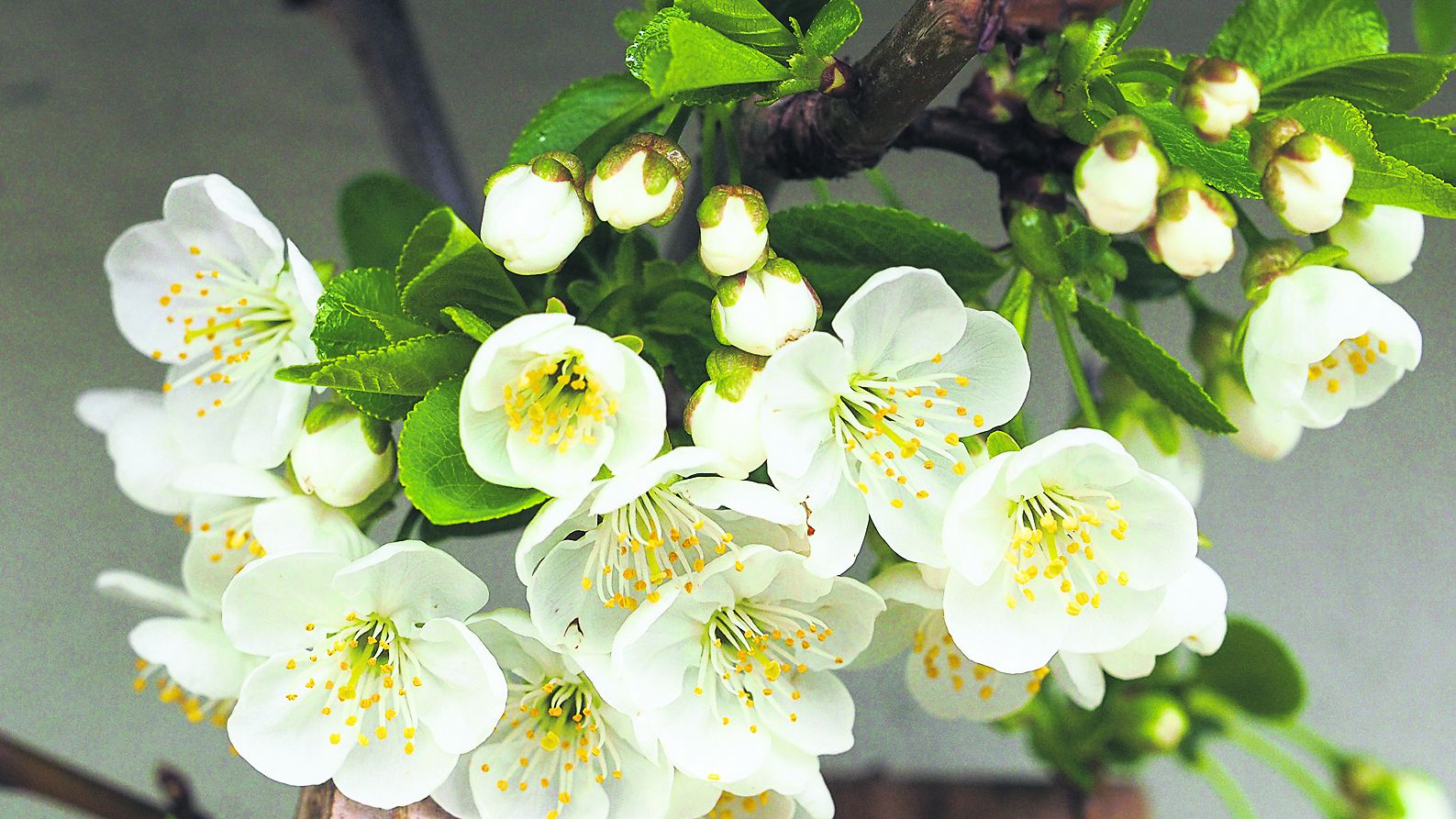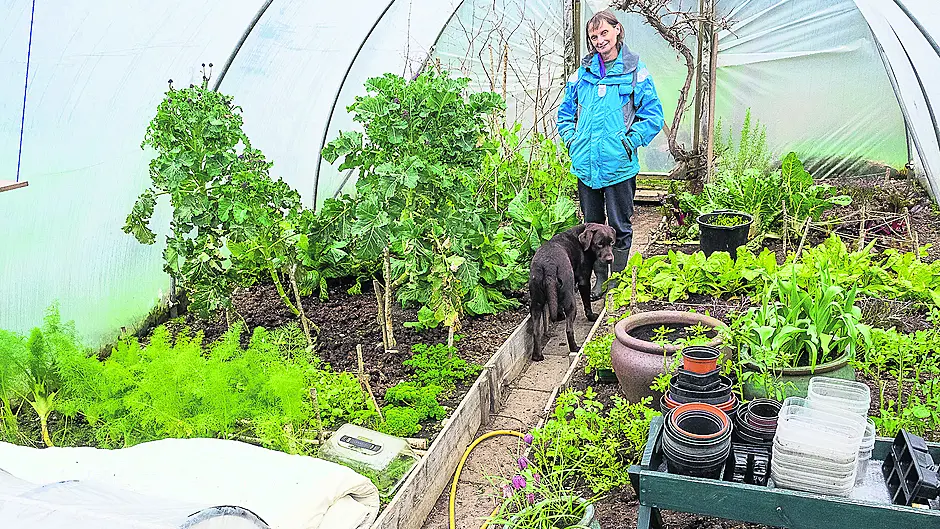By Joyce Russell
APRIL can be a beautiful month and the vegetable garden starts to get busy. We’ve had a good spell of fine weather and, if this continues, you may need to water small plants and seedlings. Surface soil can go from soggy to dry in a couple of warm weeks and raised beds dry out faster than unraised ones. A light sandy soil drains faster than a heavy clay soil and beds on a slope can soon loose moisture. Outdoor beds are usually fine left to their own devices provided April showers do their bit – keep an eye on things and don’t be afraid to use a hosepipe if needed.
Greenhouse temperatures
Temperatures can soar under cover on a bright sunny day. Use thermometers and open doors and windows to cool things as needed. No plants like the swing between 30C daytime levels followed by nights that are in low single digits.
Ventilation is crucial if you want to keep the spread of moulds and mildews to a minimum. Always leave doors open if you are out for the day – cloud cover can move away quickly and your greenhouse can become a sauna.
Watering is important now too. Make sure plants get what they need and spray over head to cool things down if temperatures rise to high.
 Protect blossom on fruit trees if hard frost is forecast.
Protect blossom on fruit trees if hard frost is forecast.Protect early blossom
Some fruit trees and bushes start to open fruit buds in April and at this stage they can be vulnerable. Sunny days can be followed by cold nights and late season frosts seem to become more common. Cover trees, or a few branches, on apple, pear, plum and cherry trees if a hard frost is forecast. A wall-trained tree can be draped with a sheet – the air between the wall and the sheet will stay a couple of degrees warmer than if the tree wasn’t covered.
Raspberries, currants and blueberries seem hardier and the blossom doesn’t suffer in an average April. Strawberries should be covered on frosty nights if plants are outdoors and in flower. Greenhouse strawberries should have enough protection.
A bit more covering
My garden looks like it is tucked up in bed at this time of year. I have crop cover over potatoes, onions, and garlic. Pea and bean rows are covered too and the newly prepared beetroot and carrot beds can be covered so they warm up before planting.
The covers protect what is growing underneath, so wind, frost, heavy rain and birds do less damage. Covers will be removed when temperatures settle into a benign regime. At that stage, young plants should be growing strongly.
I have a large propagator in my polytunnel. This is usually uncovered during the day and at night it can be set to maintain a required temperature. Bearing in mind that energy prices are rising to ridiculous levels, I cover the thin propagator cover with a thick duvet at night – this keeps the contents warm while saving on electricity. Remove any light-excluding cover in the morning so plants aren’t kept in darkness for longer than needed..
 Start courgettes in pots for outdoor planting.
Start courgettes in pots for outdoor planting.Sowing and growing
Sow salad leaves and spinach where you want them to grow. Seedlings come up in a few days – protect from slugs in the early stages.
Brussels sprouts and leeks that were sown in small trays, can be moved to deeper tubs of compost as soon as they are big enough. Plants need enough nutrients to get some growing done before they are planted outdoors so don’t restrict root growth.
Tomatoes, peppers and aubergines should be strong little plants in their 8cm pots. Move them into larger pots to keep them growing steadily until they are planted.
Courgettes sown in pots now will be ready to plant outdoors when things are warmer. Keep moving to bigger pots as needed – plants won’t suffer and they can be protected until it is safe to plant in the garden.
You can still sow parsnips early in April. They won’t grow as big roots as earlier sowings but they may avoid canker.
Troubleshooting problems
• Tomatoes are thirsty plants and compost can dry out in the base of the pot if you use a heated mat. Stand pots in a bowl of water once a week so water gets where it is needed.
• Greenfly can cause leaf curl and thinning top growth on peppers. Squash what greenfly you can without damaging the plant and spray the rest with a soap and water solution.
• Hang old DVDs in fruit trees to keep bullfinches away from the blossom. Anything that glitters and moves will deter these shy birds and you should get some fruit from the remaining blossom.
• Slugs and snails are active now – protect emerging seedlings or they may be eaten before you realise they have popped through the soil. Carrots and lettuce are firm favourites.










